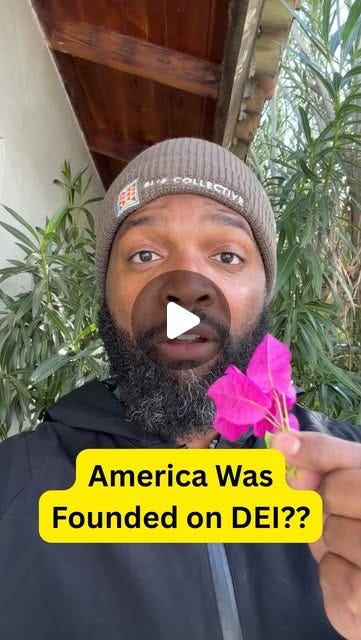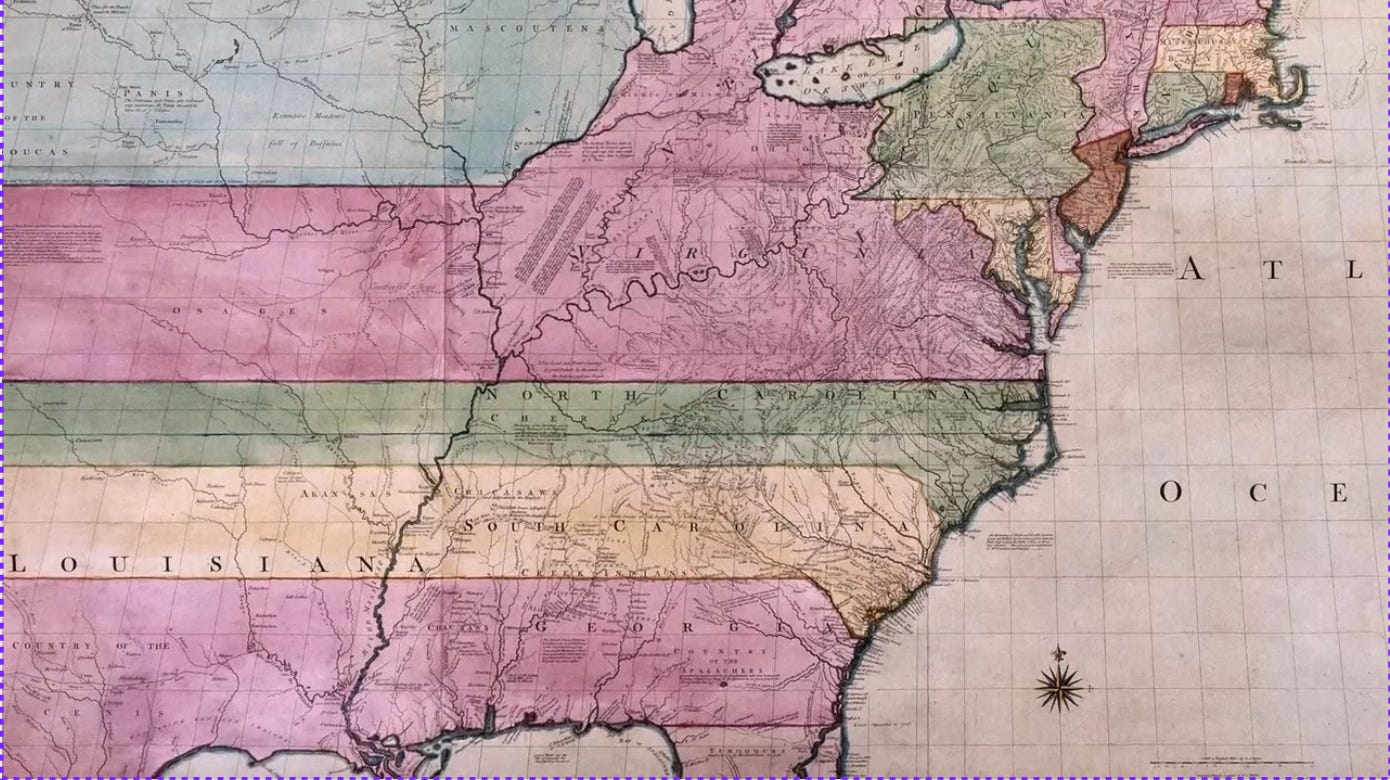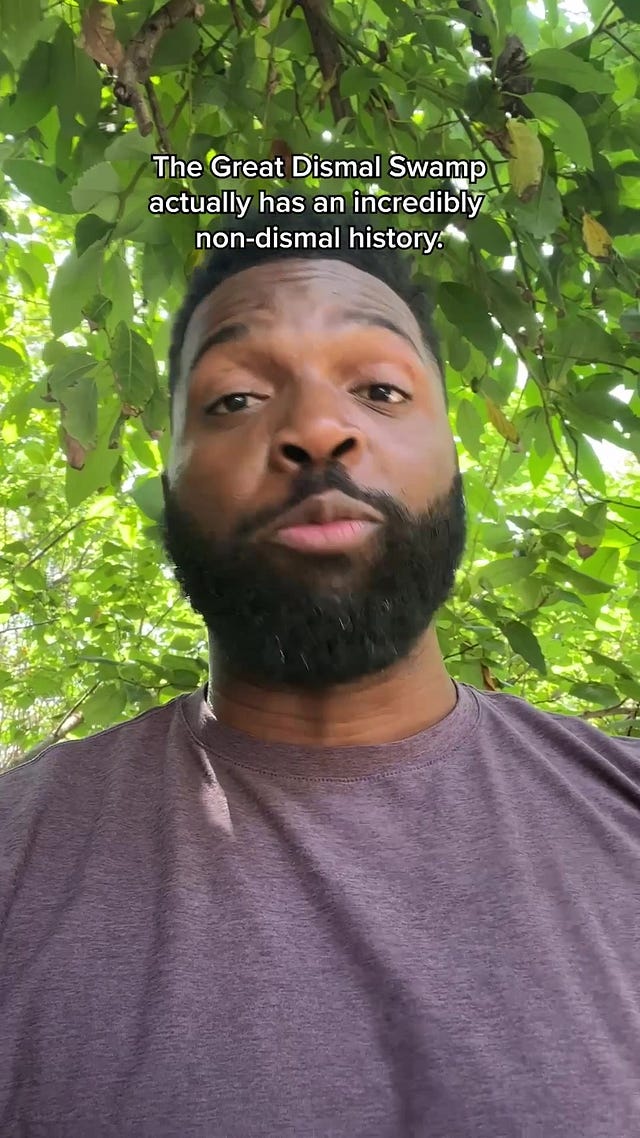Reaction to Episode 1 of The American Revolution
Founded in DEI and land theft while built on indigenous democracy
Hi you,
All week, PBS is airing the new Ken Burns documentary, The American Revolution. I’ll be watching it and offering a set of post-episode highlights and observations so keep coming back! You can watch the series for free at the link above. I strongly urge you to do so! Here’s my enthusiastic IG post:
If you’re new, I’m Baratunde, and this is my newsletter. I try to tell it like it is while reminding us of how things can be. Sometimes there are jokes because living in these times without them is a terrible idea.
Here’s the quick highlights of what stood out to me about Episode 1, (and Episode 2 is live!)
Acknowledgment of indigenous democracy that preceded European colonization
America was a DEI nation from the get go
and America was a genocidal business with a “growth mindset”
Boston has always been rowdy
What this all has to do with troop deployments in U.S. cities today
Quick Background
I’m heavily invested in the story we tell ourselves about ourselves. I’ve spoken and written on this idea that we are who we tell ourselves we are.
My 2019 TED talk was a reminder that we can tell a different story about race
The How To Citizen podcast series I co-created celebrates democracy as something we do, not something we have
My 2025 keynote at the Bioneers conference was a call to declare interdependence and expand from “me” to a bigger “We” with specific citation of indigenous democracy on this land
My partnership with PolicyLink around the We Are Founders effort to finally create a democracy that works for all. More on this in the coming months!
As we enter the season of the 250th anniversary of the Declaration of Independence, it’s even more important to revisit our origin story so we can celebrate the right things and find solid ground and principles upon which to create the next chapters of the American story. Not being British, while quite satisfying, is not enough of a reason to remain together.
Despite my lifetime of awareness that the official story of the United States has consistently excluded large groups of people (including my own), only in the past two years did I come to a more full understanding that democracy was present and practiced on this land by indigenous people long before any European arrived and continues to be practiced today.
I wrote in July 2025 about this right on Substack.
Later this month my magazine piece for Atmos will run providing even more context about this history (and present) of indigenous democracy and what it might offer us still.
In the meantime, here are six thoughts that stood out to me about Episode 1 of The American Revolution. I invite you to share your own in the comments and share this piece with others to encourage us all to learn together and actually become the democracy we’ve been talking about for the past 250 years.
The First Words from The First People’s
“We know our lands are now become more valuable. The white people think we do not know their value, but we are sensible that the land is everlasting” - Canasatego
I got chills hearing these, the first words spoken by an historic participant in The American Revolution series. You hear the drum first and then these words. The official voiceover continues:
Long before 13 British colonies made themselves into the United States, the Six Nations of the Iroquois Confederacy, Seneca, Cayuga, Onondaga, Tuscarora, Oneida, and Mohawk had created a union of their own that they called the Haudenosaunee, a democracy that had flourished for centuries.
That part. Democracy was already here. Just under two years ago I was assigned a curriculum in preparation for a meeting with elders from the Haudenosaunee Confederacy. High on the list was the out-of-print book, Indian Roots of American Democracy. In it I read the words of Canasatego
The words of Canasatego continue:
We heartily recommend union. We are a powerful Confederacy, and by your observing the same methods our wise forefathers have taken, you will acquire fresh strength and power. Therefore, Whatever befalls you, never fall out one with another.
The precedent of democracy on this land is a mind-blowing, story-expanding thing, and the fact that the Haudenosaunee encouraged a similar practice among the fragmented colonists which then inspired the future founders is something we should all be learning as part of U.S. history.
One last quote from episode one
In the spring of 1754, the celebrated scientist and writer Benjamin Franklin proposed that the British colonies form a similar Union. He printed a cartoon of a snake cut into pieces above the dire warning, Join or Die. A few weeks later at Albany, New York, Franklin and other delegates from seven colonies agreed to his plan of union and then went home to try and sell it. But when the plan was presented at the Colonial capitals, each of the individual legislatures rejected it because they did not want to give up their autonomy. The plan died, but the idea would survive 20 years later, Join or Die would be a rallying cry in the most consequential revolution in history.
Kudos to Ken Burns and team for starting off with the drum and the words of the first people. This is a radical and overdue update to the narrative.
Founded as a DEI Nation
I fist-pumped hearing this from historian Christopher Brown in the first 10 minutes of the episode:
One of the most remarkable aspects of the Revolutionary War is that you had such different places come together as one nation. I’m not sure there is a state anywhere in the world in the late 18th century that has. As wide variety of people who inhabit it. And so it really is actually kind of remarkable, the way that that nation ends up cohering, not around culture, not around religion, not around ancient history, it was coming together around a set of purposes and ideals for one common cause.
Say it louder for the white supremacists in the back! (and in the front leading the country right now).
This matters because we are in yet another moment in which white supremacists and Christian nationalists are trying to rewrite the story of the nation as one founded solely by White Christians. That’s the 1776 backlash to 1619. That’s the book banning and attacks on universities and other educational institutes. That’s the use of our own American Gestapo, aka ICE, to attack anyone remotely brown and kick them out of the country, explicitly claiming this is a country by white people and for white people. That is the lie.
White Christians could not have formed this nation on their own, and they did not. It was the combined effort of free and enslaved Africans and their descendants, multiple indigenous nations, descendants of multiple European nations, and practitioners of multiple flavors of Christianity and more that worked together to forge this union. Without everyone, we would be no one.
Founded on Expansion and Land Theft
The colonists were eyeing westward expansion from the start, and there are absurd maps to prove it.
For Americans, land and liberty are completely intertwined. White Americans see their liberty as being founded on not being a peasant on somebody else’s land. Preserving, promoting that liberty for white Americans to them means taking native land. There is no other answer. - Historian Kathleen Duval
This is key. We have been taught that the revolution was about taxes, representation, and “liberty,” but it was also about land, speculation, and profit-seeking. The founders of the nation were also founders in the corporate and business sense.
I learned a slice of this history in my America Outdoors series with PBS upon visiting The Great Dismal Swamp. None other than George Washington himself was a shareholder of the corporation seeking to drain this swamp and convert it into cash crops worked by enslaved Black people.
Here’s a short TikTok clip I posted about the Maroon societies that lived in that swamp, followed by my conversation with Larry Wilmore on his podcast where we go deeper in the George Washington of it all.
So take another look at the map above which reflects much of the pre-founding intention of the colonists-turned-rebels. They wanted to get rich and were eager to displace and even kill untold numbers of indigenous peoples to do it. Also, those state lines would have been seriously ugly. Very little imagination there: “Just draw parallel lines to the left, all the way.”
Ned Blackhawk, featured in the series, has a must-read piece in The Atlantic about how part of what stoked rebellion against the Crown was the King and Parliament preventing further expansion west. George Washington, ever the entrepreneur, was a land speculator who stood to lose money due to the restrictions the Crown imposed on the colonies.
The founders were businessmen who had business interests and didn’t want far-away England cutting into their profits. The center of the resistance was Boston.
Boston has always liked to fight
I know the saying goes, “Don’t mess with Texas,” but we really should update that to reference Boston. They are the real ones. I lived in Boston for 12 years and have constantly joked about the raucous, chaotic spirit of that town. When the Red Sox win, the people riot. Turns out they come by that trait naturally.
Episode 1 really lays the groundwork for Boston as an always-been-turnt town ready to fight. All those frat boys I encountered on Landsdowne Street were just channeling their inner anti-tax, pro-democracy ancestors.
The amount of fighting, rioting, burning, and assaulting that Bostonians did to kick off the Revolution was astounding. Boston straight up provoked The Crown on multiple occasions and then Sam Adams kept adding fuel to the fire, not through his beer but through his newspapers. This quote stands out to me from the series:
In Boston, 42-year-old Samuel Adams helped rally the opposition against implementation of the Stamp Act, a failure as a brewer and as a collector of local taxes, Adams was a master of propaganda.
Yes it was the taxes that British Parliament was trying to levy, but it was also the dissolution of local town halls and self-government that really irked the people.
Also from the series:
he would try to end every vestige of self rule prized by the people of Massachusetts first, the Prime Minister convinced the parliament to repeal that colony’s long standing charter, then dissolved the elected assembly again and limited each town and village to just one town meeting a year
The additional acknowledgement I love from this first episode is the mention that the men who took part in the Boston Tea Party dressed like indigenous folks, not to actually try to fool witnesses but to attempt to claim an identity as more native American, in opposition to the United Kingdom and Europe.
As I’ve learned in my own studies repeatedly, “American” originally referred to the indigenous peoples of this land. The American Revolution created a wedge between Europe and the white people of the Americas which drove them to further self-identify as American.
Now About Deploying the Military into U.S. Cities
Very shortly, I’ll be able to point you to the recording of my conversation with former General Stanley McChrystal that I held at the Masters of Scale conference last month. I made a point of seeking his thoughts about the deployment of federal troops (or those dressed up as federal troops) to terrorize, assault, and kidnap people in American cities at the behest of President Trump. The general was impassioned on the subject and cited the American Revolution in response.
I don’t have the direct quote, but he reminded us that the King’s imposition of troops in Boston, allowing them to quarter in people’s homes, was something the founders strongly rejected. The risk being that the people see the military as an occupying force and grow to distrust them.
Episode 1 drove this point home.
For 17 months, Boston was an occupied city. A rattle of drums awakened residents every morning. Passersby were routinely stopped and searched.
- The American Revolution on PBS
And more from that same part of the episode:
There were brawls, stabbings, suits, and countersuits from London. Benjamin Franklin was concerned. “Some indiscretion on the part of Boston’s warmer people or of the soldier may occasion a tumult. And if blood is once drawn, there is no foreseeing how far the mischief may spread.”
This is what the Trump administration is attempting to provoke by unleashing under-trained personnel dressed as U.S. military (and in some cases actual military) into cities run by Democrats and inhabited by large numbers of immigrants. They have tackled, fired upon, tear gassed, and kidnapped people including documented citizens. Fortunately the people from LA to DC to Chicago to now Charlotte have not taken the bait. But let’s see it for what it is: an intentional provocation meant to justify the escalated use of force by the government against the people.
That’s the very thing that set this nation into being in the first place. We would do well to remember it.
What have you noticed from The American Revolution so far? Are you learning anything new, or maybe frustrated at the exclusion of some element?
I asked this in my Speak Easy Chat, and Sam Murphy replied in part:
White People marching in Charleston yelling “Liberty!”, and enslaved folks joining in, and they shut that down.
Here, here! The exposure of rank hypocrisy in cries for freedom and liberty while building a society and economy based on denial of that very thing to others is one of the things I’m most grateful for about this series so far.
We can celebrate democracy while also calling out its absence. In fact, to truly do the former, we must also do the latter. Otherwise we’re just talking.
Here’s my thoughts on episode 2









I love how the narrators were intentional about telling the true history about Washington and the colonies. We are thought it was about taxation without representation but that isnt the full story. It was also about colonial settlers expanding into Native land and they felt that it was their right to expand. The true story about who George Washington was....the nuance of him as someone who was an enslaver and settler and felt that he should do as he pleased without being held in check by the crown. Anyway, great episode! Also Boston...jeez...lol
I noticed the narratives about many small communities springing up "Sons of Liberty" and "Daughters of Liberty" chapters to foster local demonstrations of solidarity and actions to promote resistance. We have a goodly heritage.